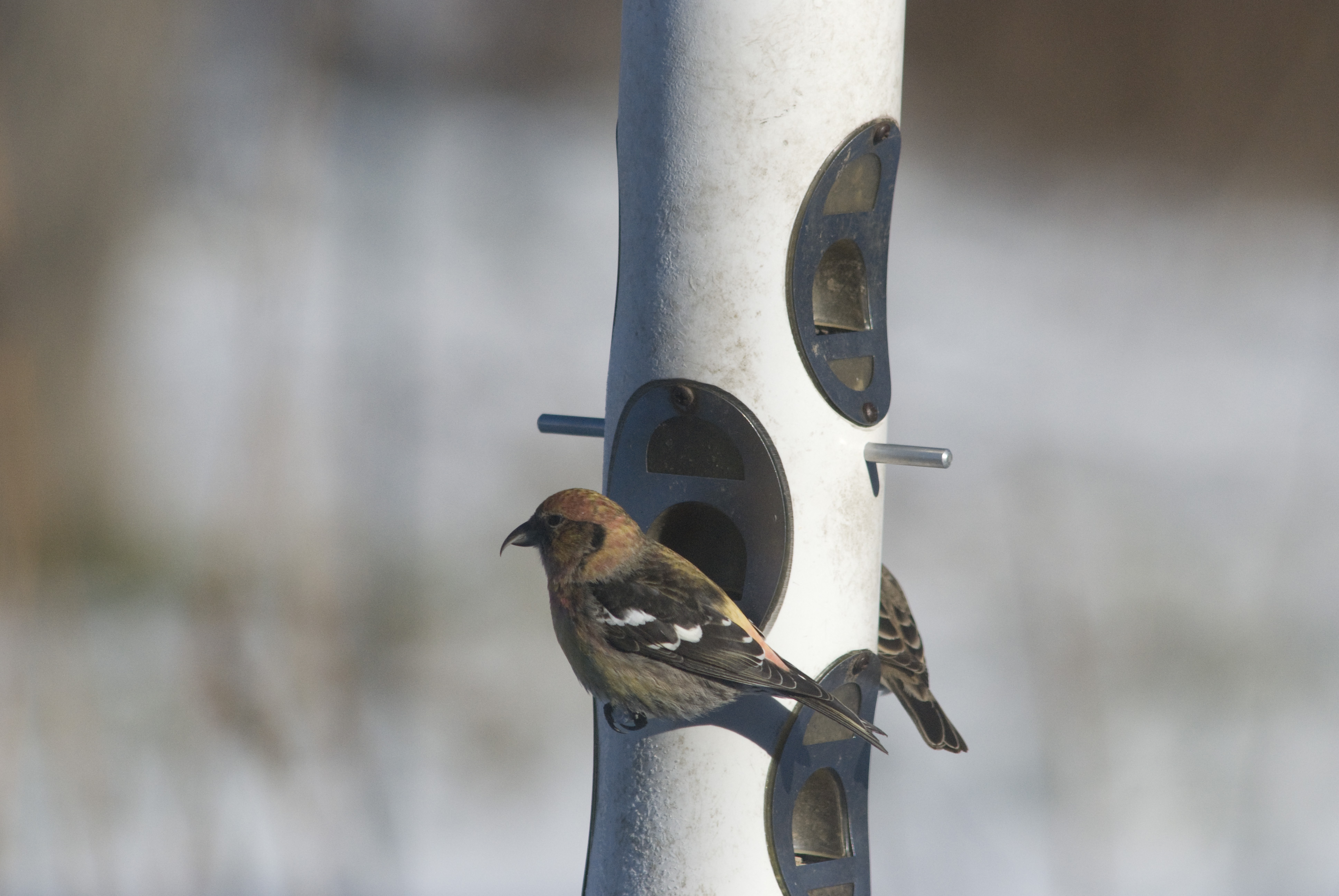Unusual Visitor
I received the following email on December 16th:
Hi Eric,
This white-winged crossbill showed up at our feeder last week and is still returning daily. I had never seen one before and was struck by the interesting coloring. Also I never saw a wild bird that was so un-affected by my presence. The photos were taken from about three feet away. Is this normal for this bird?
Ed Wolski
Troy, NH
The photographs provided proof positive that Ed’s backyard was indeed hosting a white-winged crossbill, an unusual bird in southern NH at the best of times. Crossbills are members of the finch family, which includes the more familiar American goldfinch and the purple finch. Finches are among my favorite birds, and crossbills are favorites among favorites. Thus I found myself on the phone a few minutes later to see if I could schedule a time to visit. I dropped by the next day, and after a half hour of “will he, wont he”, it showed up in the backyard with a flock of house finches.
Ed’s email alludes to a couple of interesting features about this sighting. The mixture of green and red feathering suggests that this bird is molting. Only female or young crossbills sport green plumage. Adult males are brick red. Thus this bird was born last year and is molting from juvenile into adult male plumage.
Secondly, Ed states that he was able to approach the bird to within three feet. To my way of thinking, this indicates either; a) the bird is sick; or b) it was born and raised in an area devoid of humans and has no innate fear of them. I am going for the latter option, and for good reason. In addition to the bird appearing to be in good health, I know that white-winged crossbills are birds of the northern boreal forest, a vast zone of spruce and fir that stretches from Alaska to the Eastern Seaboard. No doubt, many birds raised in this sparsely populated area have no reason to fear humans, a characteristic shared by other birds from the north. Interestingly, Ed stated that the bird became much more wary as the days went by, and I certainly found it to be flighty when I visited. I suspect that the crossbill learned its wary ways from its new friends, the more streetwise house finches.
Finally, the photo shows the crossed bill for which these birds are famous. They use it as a tweezers to extract seeds from the cones of spruce trees. Spruce, fir, and other trees produce seeds in an unpredictable cycle. The birds follow the food, and in the process they become unpredictable themselves. They occasionally wander south when their food crop up north fails, or when they have had a very good breeding season. This however, is not such a year, and thus Ed’s is one of a very few reports from south of the White Mountains. I suspect it has not found many pine cones here either, as it seems to be relying on birdfeeders, an unusual event for this species.
Please keep your reports coming to eric.masterson@myfairpoint.net, and if you include a photo, even better. The Monadnock Shopper pays $5 per illustration, and as this is Ed’s photo, $5 is on its way.
Happy New Year Ed and Caroline.

No comments yet.